Showing 37–48 of 166 results
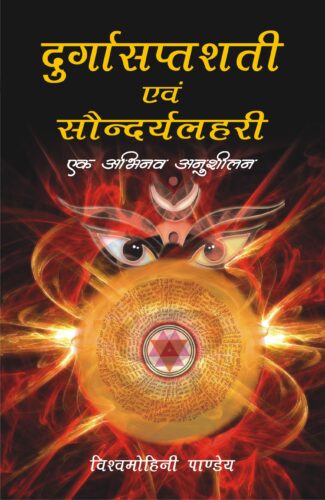
Since the inception of Creation, woman has always been adored as a symbol of strength (Shakti) and beauty (Saundarya). In reality, the importance of woman begins in the foremost ancient text of the Rigveda in its Vak Sukta. Upanishads also mention Usha Devi as eternally young woman. This trend continues in Puranas too. History of ancient India has been described in Puranas, and sanskriti (culture) shown therein is the sanskriti of a comman man. Markandeya Purana, one of the eighteen Mahapuranas, consists a collection of thirteen chapters in 700 shlokas named Durgasaptashati, depicting that form of Goddess Bhagavati, the Universal Mother, which explores womans dignity with its constructive power.
In the same tone, Saundaryalahari mentions about Bhagavati who is simply Kundalini, and her depiction as aesthetically beautiful woman is manifested by Shankaracharya. This scripture reveals that the worshipping power inspires us for continuous creation, and discusses about philosophical (Tantric), cultural and literary trinity. In this deliberation antiquity manifests itself into modernity and ultimately into science. When meaningfulness of word-Brahman takes divine form, then it becomes humanity and there itself we realize the concept of Shiva-Shakti. The light of Brahman exists in this world. This exact realisation of Brahma is the subject-matter of this book.
The sources of Indian culture are found in Darshan and Tantra. This expounds the expression of Tantra philosophy in the comparative appreciation of Durgasaptashati and Saundaryalahari. This book appreciates poetry, culture and literature and at the same time, there is also beautiful assimilation of aesthetic sense, Tattva-Darshan and literature.
Since the inception of Creation, woman has always been adored as a symbol of strength (Shakti) and beauty (Saundarya). In reality, the importance of woman begins in the foremost ancient text of the Rigveda in its Vak Sukta. Upanishads also mention Usha Devi as eternally young woman. This trend continues in Puranas too. History of ancient India has been described in Puranas, and sanskriti (culture) shown therein is the sanskriti of a comman man. Markandeya Purana, one of the eighteen Mahapuranas, consists a collection of thirteen chapters in 700 shlokas named Durgasaptashati, depicting that form of Goddess Bhagavati, the Universal Mother, which explores womans dignity with its constructive power.
In the same tone, Saundaryalahari mentions about Bhagavati who is simply Kundalini, and her depiction as aesthetically beautiful woman is manifested by Shankaracharya. This scripture reveals that the worshipping power inspires us for continuous creation, and discusses about philosophical (Tantric), cultural and literary trinity. In this deliberation antiquity manifests itself into modernity and ultimately into science. When meaningfulness of word-Brahman takes divine form, then it becomes humanity and there itself we realize the concept of Shiva-Shakti. The light of Brahman exists in this world. This exact realisation of Brahma is the subject-matter of this book.
The sources of Indian culture are found in Darshan and Tantra. This expounds the expression of Tantra philosophy in the comparative appreciation of Durgasaptashati and Saundaryalahari. This book appreciates poetry, culture and literature and at the same time, there is also beautiful assimilation of aesthetic sense, Tattva-Darshan and literature.
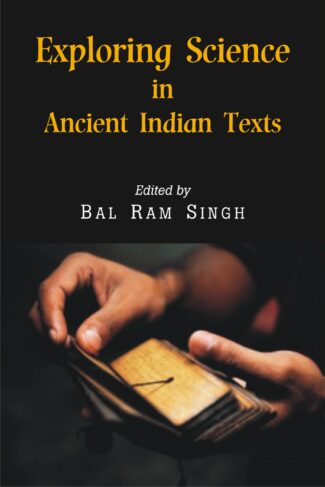
The volume is an attempt to lay down some of the fundamental principles of Vedic traditions and practices for improving the efficacy of modern science. As ancient Indian texts contain many advanced technologies and scientific developments, it is for one’s surprise that what technologies were in use and what scientific developments are relevant in our time.
Philosophical and cultural factors play a significant role in developing scientific theories and interpreting data. These factors are also influential in assessing science and technology. We experience a visible distinction in the philosophy and culture of the West and East, mainly due to geographical and climatic reasons. And this difference reflects in their approach to science and technology too. Modern science has many roots in Vedic and Upanishadic knowledge. For historical reasons or so, this has been deliberately disassociated even from the philosophical bases. Vedic traditions or dharma traditions address many a question that modern science addresses. These include the origin of matter and universe, origin of life, origin of species and evolution, state of consciousness and mind, among others.
This book addresses topics such as the basic premise of scientific approach to examine reality; mathematical and scientific knowledge, derivation, and application of Vedic perspective; and models for current scientific issues with Vedic perspective, and thus covers ideas of matter and universe, consciousness and mind, and fundamental questions of defining and applying science and scientific approaches. It also deliberates on more attractive aspects of Vedic knowledge such as Ayurveda and yoga, which are fast finding base across the globe.
The volume is an effort to lay down some of the fundamental principles of Vedic traditions and practices for improving the efficacy of modern science. As ancient Indian texts contain many advanced technologies and scientific developments, it is for one’s surprise that what technologies were in use and what scientific developments are relevant in our time.
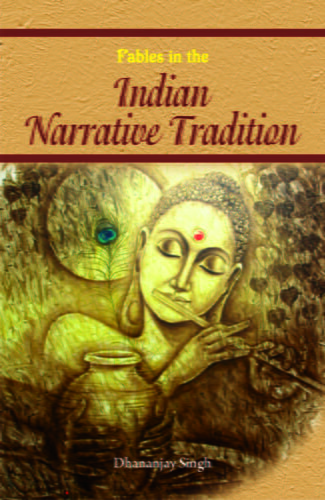
The book studies and develops an overall understanding of the Indian fables, their philosophy, mutual relationships, proliferation and textual scholarship. It also establishes the chronological development of the fables, right from the earliest utterances found in the Vedas to the epics, the Pa¤catantra and Buddhist texts.
The fable is the most metaphorical of all narrative genres. The Indian fable, being both realistic and other-worldly, is recognised as a wonderful integration of the aesthetic and the discursive. Imitating the habits, chores, beliefs of the Indian culture, it is the dominant form in texts like the Pancatantra, the Jatakas, and the Hitopadesha. It is included at different places in the long narratives of the Mahabharata and the Yogavasishtha, and is disseminated in the form of the various folktales of India. This volume explores the unique tradition of Indian fables to present a theoretical understanding and critical analysis of the various aspects of the Indian fable.
The work studies the Indian fables spread across various compositions in the context of the dominant discourses of the narratives, their form and structure and their continuing relevance. It develops an overall understanding of the Indian fables, their philosophy, mutual relationships, proliferation and textual scholarship. It also establishes the chronological development of the fables, right from the earliest utterances found in the Vedas to the epics, the Pa¤catantra and Buddhist texts. It emphasises the significance of the Indian fable as a discourse, often the narrative becoming subservient to the fables discursive function.
This interesting study will prove useful to scholars and students of Indology, particularly those concerned with Indian culture and literary tradition, as well as general readers interested in fables and stories of the Indian tradition.
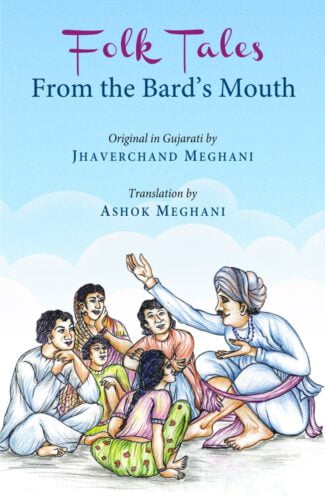
This book, translation of ten stories by the famous Gujarati writer Jhaverchand Meghani, reflects the rich folklore culture of both Kathiawad and Saurashtra regions. These stories are of much currency in Gujarat.
The Kathiawad peninsula in Western India boasts a rich heritage of oral traditions. The Charan and Barot communities were especially known for their unique storytelling styles. Jhaverchand Meghani, the author, suggests that much of the main subject matter comes from stories in the Sanskrit epics like Panchatantra and Kathasaritsagar, as also from legends created around historical figures like King Vikram of Ujjain. These orally told stories were handed down from generation to generation, and were further enhanced by each storytellers creativity in injecting elements that would help the story move forward while holding the listeners interest.
This book contains ten stories told in such unique style, collected in the 1920s, and published in Gujarati using the exact words as used by the storytellers. The objective of this English collection has been to preserve the original oral style and content as much as possible in a translation to culturally so different a language form.
The authors two scholarly treatises analyse this storytelling style, and provide a comparison with similar stories from other parts of India as well as the West. The author also draws conclusions of his own about the origins and the spread of these stories. These treatises may be of great interest to students and scholars of folklore, perhaps leading to further research.
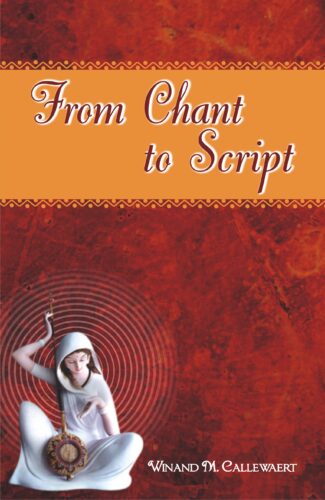
This book is an omnibus of eleven thoroughly revised articles on Nirguna Bhakti, published in the 1970s and 1980s. In order to complete the overall view of the author’s research on Nirguna Bhakti, this volume is appended with a summary of nine books published during 1989-2009.
Callewaert started to publish long before the computer age, in 1974. He sent his PhD dissertation to the press typed on paper and then revised three typeset proofs. In 2009, he sent his most recent publication to the publisher on a memory stick: 2,187 pages. Many of the early articles, especially those of the pre-computer age, may no longer be easily available and for that reason eleven articles were selected and thoroughly revised for this publication (pp. 3-169). The research career of Callewaert was at the beginning strongly inspired by F. Camille Bulcke (Ranchi) and Charlotte Vaudeville (Paris). He followed their advice and worked mainly on manuscripts with Nirguna Bhakti literature, preparing critical editions and English translations. In order to complete the overall view of this research in that area, in this book are further given a summary of nine books published in the period 19892009 (pp. 171-216) and a summary of eight articles (19962011, pp. 217-44).
During his career he has photographed many manuscripts now threatened with destruction (the result is now digitized in the University of Heidelberg Library); he has prepared critical editions and translations in collaboration with several outstanding colleagues, and he realized how wrong he was in 1971 when defining his research future: to copy as many manuscripts as possible and to reconstruct the archetype, of the original Kabir and others, after a stemmatic comparison of the manuscripts. For, scribes committed errors, intentionally or unknowingly, and variant readings, Callewaert thought, should enable a researcher to establish the relationship between the manuscripts. What eventually turned out to be a wrong methodology became a very exciting adventure, when Callewaert started to discover the singers in the manuscripts. This evolution too is discussed in the present volume, From Chant to Script.
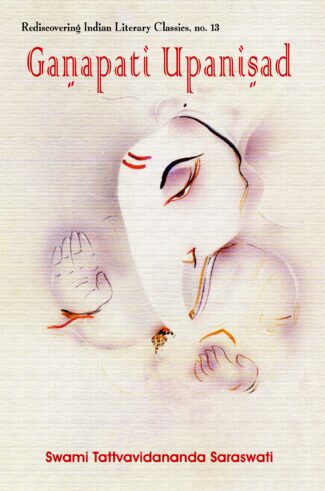
The book presents the text of the Ganapati Upanisad dealing with the worship of äsvara and revealing the nature of the ultimate Reality along with its transliteration in Roman script, followed by a detailed commentary a critical analysis on its meaning.
The Upanishads represent a glorious religious-philosophical thinking that is at the core of the Indian tradition. An important Upanishad is the Ganapati Upanishad, found in the concluding part of the Atharvaveda, which deals with the worship of ä÷vara and reveals the nature of the ultimate Reality in which everything resolves. The book presents the text of the Ganapati Upanishad along with its transliteration in Roman script which is followed by a detailed commentary on its meaning that takes up each line for critical analysis. Beginning with a general discussion on the Upanishads, their association with specific Vedas and their main purpose, Swami Tattvavidananda examines the nature of the Cosmic Power and the universe, propitiation of God, the purpose of living, concepts of ananta, ananda and others as explained in the Ganapati Upanishad. He explains the derivative roots of many words so that the concepts may be better understood by the readers. The commentary, in a language that demystifies esoteric concepts, includes many cross-references. The book will be extremely useful to scholars of Vedantic thought and Indian religious and philosophical traditions as well as general readers.
Gita Govinda, a drsya-kavya of Jayadeva, a twelfth-century Sanskrit poet, due to its deep foundations in devotion and exquisite intrinsic beauty, is the most desired in the music and dance of India. This erotic poem, through its three characters in Radha, Krsna and the sakhi, portrays physical love as a metaphor for divine longing of the individual soul to have its union with the Supreme.
The volume in hand presents the primacy of the language in linguistic and literary theories as the vehicle of thought, along with the performing arts background and technical aspects of dance that complement Jayadeva’s composition. It also deals with a setting for the Gita Govinda in terms of its historical context, time, cultural influences and relevance in the arts.
It addresses each and every verse of Gita Govinda with translation and literary notes. Also, it showcases the uninterrupted text in Devanagari along with Romanized transliteration. In a nutshell, the book brings to us a magical world of dance and music through the eyes of a Sanskrit scholar and a mature, expressive dancer in Sharda Narayanan and Sujatha Mohan, respectively.
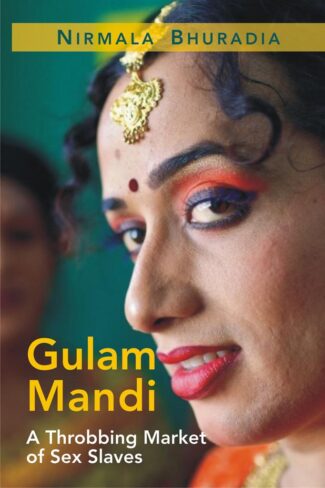
It makes one travel through the horrible, fraught and turbulent world of human trafficking wherein innocent children and women are entrapped, sold and forced into flesh trade by a well-knit network of mafia gangs. It also brings into limelight the pity world of hijras, the victims social apathy and prejudice, and their sexual exploitation at the hands of many.
Gulam Mandi revolves around the life of its two protagonists Kalyani and Janki. It makes one travel through the horrible, fraught and turbulent world of human trafficking wherein innocent children and women are entrapped, sold and forced into flesh trade by a well-knit network of mafia gangs. In its quintessential, the story brings forth the myriad colours of human nature hate, rejection, betrayal, apathy, ecstasy, opportunism, pure love, sex, expectation, trust, empathy, hope, rejuvenation and so on.
Kalyani, a beauty queen, fears ageing and childbirth and is jealous of her own young daughter. Janki, who comes from an oppressed class and had a turbulent childhood, faces rejection from a few people, but finds shelter in Kalyani and Gautam, but, of late, destiny plays its tryst with her life. Finally, she finds solace in Mohan.
It portrays the uneven world of the exploitors, who usurp and violate the victims, and the victims who are the sufferers and cannot normally escape the clutches of their perpetrators to rebuild their life. It also brings into limelight the pity world of hijras, the victims social apathy and prejudice, and their sexual exploitation at the hands of many. Here is a clarion call to the society on the ills that it has been afflicted with!
The region of Orissa, from the point of view of studies in historical geography, has always remained a challenging area, not least owing to its vast and complicated history, varied geography and intriguing sources. Though the historical geography of this region has been considered for analysis in the past, it has only been featured as a chapter or in a section as part of a larger whole. Thus, this work is perhaps the first attempt to present a comprehensive research study of the historical geography of Orissa.
The author, guided by long research experience, culls material from all available sources — literary, epigraphic, etc. — to subject the theme to a systematic analysis that leaves not a facet of the subject unexplored. He describes and delves into the ancient, medieval and modern periods of historical growth to underline the historico-geographical significance of various kingdoms and places of importance that emerged, flourished and disintegrated at different times — as Kalinga; South Koshala; Odri, Utkala or Toshala; Trikalinga; and the many Mandala states. He studies the physical features of the area, the mountain system of the Orissa state and its rivers, with a view to showing how they have shaped its history. The transport and communication routes in the region since ancient times are retraced to reveal the region’s strong cultural and economic foundations among other things.
This book, from first to last, unfolds a wealth of interesting and useful information. Complete with an exhaustive bibliography, index and maps of Orissa, the book can immensely aid further research works on the subject.
The experiences and knowledge from our past are recorded in manuscripts which have been handed down to us over several thousand years. The Government of India, through the Department of Culture, took note of the importance of this vast tangible heritage and, in order to preserve and conserve as well as to make access to this wealth easy, established the National Mission for Manuscripts (NMM). In order to disseminate the knowledge content of manuscripts, the Mission has taken up several programmes such as lectures, seminars and workshops. The Mission has published the proceedings of the above-said programmes under the following series: “Samiksika” (on conservation), “Tattvabodha” (comprising lectures based on manuscripts delivered by eminent scholars), “Samiksika” (research-oriented papers presented in the seminars), “Krtibodha” (transcribed and edited texts prepared at advanced level manuscriptology workshops conducted by NMM) and “Prakasika” (publication of rare, unpublished manuscripts). The present work, Samiksika-16 comprises the proceedings of the conference on History and Development of Mathematics held in the Samskrita Academy, Chennai in collaboration with the National Mission for Manuscripts.
“India is well-known for her cultural and literary traditions, which are normally alien to the West of the twentieth century. Her wide literature is a huge treasure house. So also are her folk tales which showcase her cultural milieu. For generations, the legends of India remained vigorously active by transferring from lip to lip in the absence of any print medium, and this book is an English translation of ninety-three tales selected from a Gujarati volume, “KautukamÀÒÀ” or “Bodhavacana”, which appeared first in 1885. This book is expected to give an insight to the then West into the cultures, customs and traditions of the East through its folk tales. It will promote a larger acquaintance of the West with Indian moorings, resulting in a heartier appreciation of, the native thoughts and native customs, the practical wisdom and ripe experience. It shows considerable skill in shifting and arranging the rude materials collected from many sources and in investigating half-forgotten local chronicles of wit and humour. It also satirizes the faults and extravagances of the then Indian village community to a certain extent. The book should make an interesting and amusing reading for the English-knowing people interested in Indian folklore.”
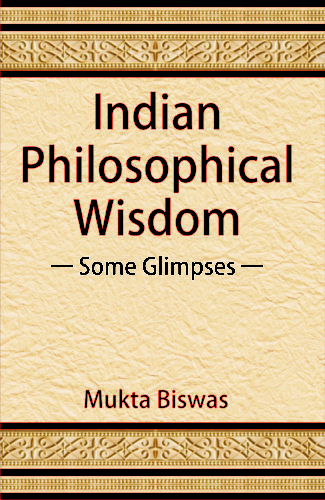
The title of the book Indian Philosophical Wisdom: Some Glimpses itself signifies its importance. Indeed, philosophy is involved in every sphere of human life — literature, creative art, culture, etc. The author in her zeal to unravel the precious accumulated wisdom of Indian philosophy delved in its treasure with different approaches — historical, analytical, comparative, etc. An attempt has been made in this book to expound Indian philosophical systems and to analyse critically their logical implications.
The title of the book Indian Philosophical Wisdom: Some Glimpses itself signifies its importance. Indeed, philosophy is involved in every sphere of human life — literature, creative art, culture, etc. The author in her zeal to unravel the precious accumulated wisdom of Indian philosophy delved in its treasure with different approaches — historical, analytical, comparative, etc. An attempt has been made in this book to expound Indian philosophical systems and to analyse critically their logical implications.
This work consists of twenty-seven articles both unpublished and published in journals and from different academic forums aimed towards making a documentation of discussions on various systems of Indian philosophy, Upaniṣadic and Yoga philosophy in particular. This could be a ready reckoner on the subject for young and enterprising students and scholars who possess innate inquisitiveness to unearth the sagacity enshrined in Indian philosophy.
| There are no products |